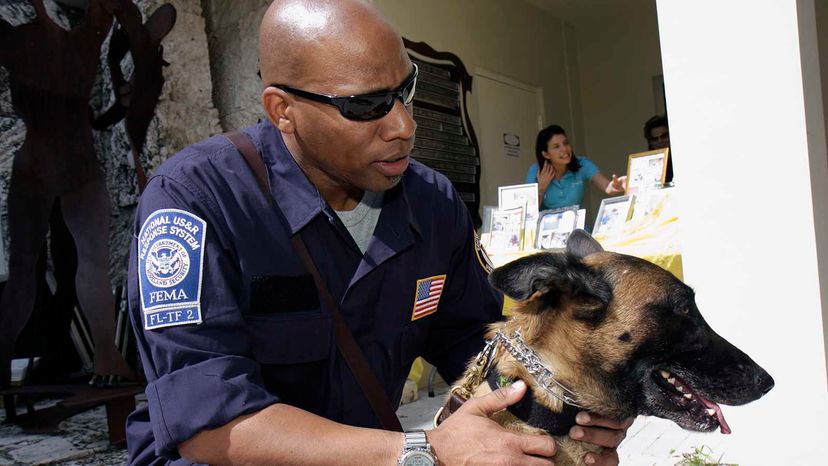FEMA SAR Team Credentials

On average, a SAR handler spends about 1,000 hours becoming field ready. They learn how to properly train a dog to find and alert, and train themselves in land navigation, weather patterns, radio communications, map and compass skills, wilderness survival and advanced first aid including CPR.
The only national U.S. credentials for SAR handlers are through Federal Emergency Management Agency (FEMA). It's part of the FEMA Emergency Responder Credentialing System for urban disaster work, and breaks down the job titles into the most commonly requested SAR personnel. As of March 2020, there were 284 canine search teams that specialized in searching for survivors, and 90 teams that specialized in searching for human remains.
Advertisement
Local SAR organizations also have their own standards for "mission ready" qualification, typically based on guidelines developed by organizations like the American Rescue Dog Association, Search and Rescue Dog of the United States and the National Association for Search and Rescue.
FEMA does set out baseline criteria that represent the minimum requirement for SAR personnel to participate in the National Incident Management System (NIMS) Integration Center's National Emergency Responder Credentialing System. The categories include:
- education
- training
- experience
- physical/medical Fitness
- certification
- licensing
Every SAR job has specific criteria for every category listed above. For example, to become a disaster collapsed structure canine search manager, one must first meet all prerequisites, then pass all levels of education, training, physical fitness and medical testing, and certifications. As the jobs advance, so do the FEMA requirements. The objective is to provide a uniform process to determine the current skill levels of SAR personnel in the program.